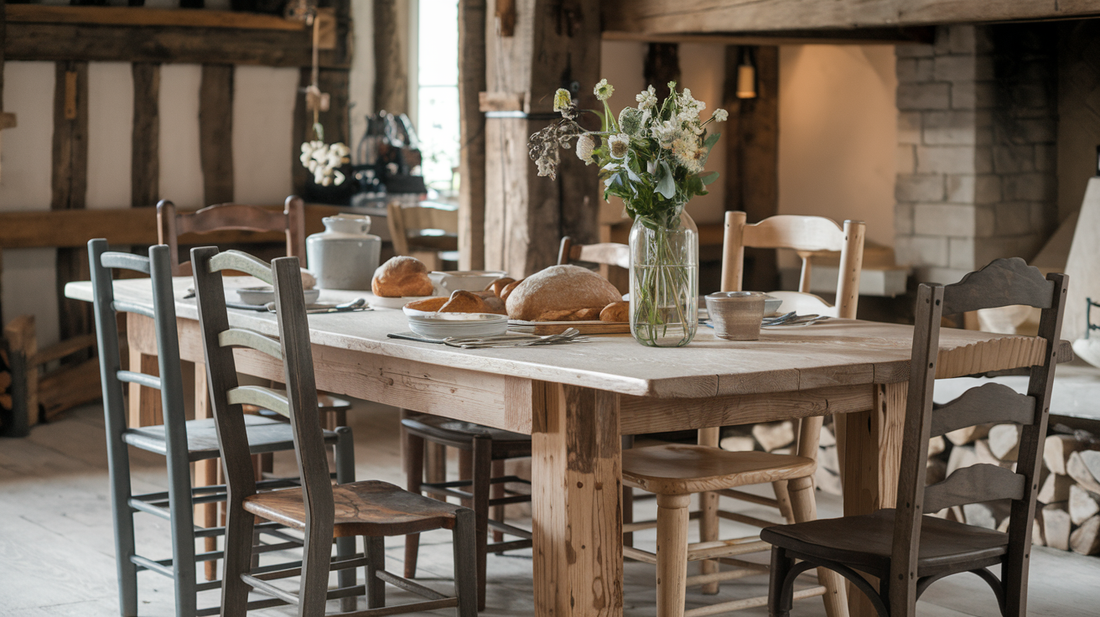
The History Behind European Farmhouse Tables
European farmhouse tables have stood the test of time as icons of simplicity, durability, and rustic charm. These tables were more than just furniture; they were the centerpiece of family life, where meals were shared, stories were told, and traditions were passed down. Let’s delve into the fascinating history of these enduring pieces.
Origins of the Farmhouse Table
The farmhouse table originated in rural Europe during the 17th and 18th centuries. Built by local craftsmen using readily available materials like oak and pine, these tables were designed for functionality and longevity. The sturdy construction allowed them to withstand daily use in bustling households.
Design Characteristics
Farmhouse tables are defined by their simplistic and robust design. Common features include long rectangular tops, thick legs, and exposed wood grain. The design was often dictated by practicality; for instance, the wide surface area accommodated large family meals and communal activities.
Evolution Over Time
As time progressed, farmhouse tables became more refined. In wealthier households, embellishments such as carvings or painted finishes were added to reflect status. Despite these changes, the essence of the farmhouse table remained rooted in its practical origins.
Cultural Significance
These tables symbolize togetherness and hard work, values deeply ingrained in European farming communities. They served as gathering spots where families connected after long days in the fields, making them integral to daily life.
Incorporating Farmhouse Tables in Modern Interiors
Today, farmhouse tables are highly sought after for their timeless appeal. They blend seamlessly with various interior styles, from rustic to modern. Pairing a weathered table with contemporary chairs can create a striking contrast that highlights its history.
Conclusion
European farmhouse tables are more than just functional furniture; they are artifacts of a bygone era. By incorporating one into your home, you’re not only adding a touch of rustic charm but also preserving a piece of history.



